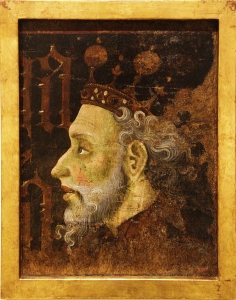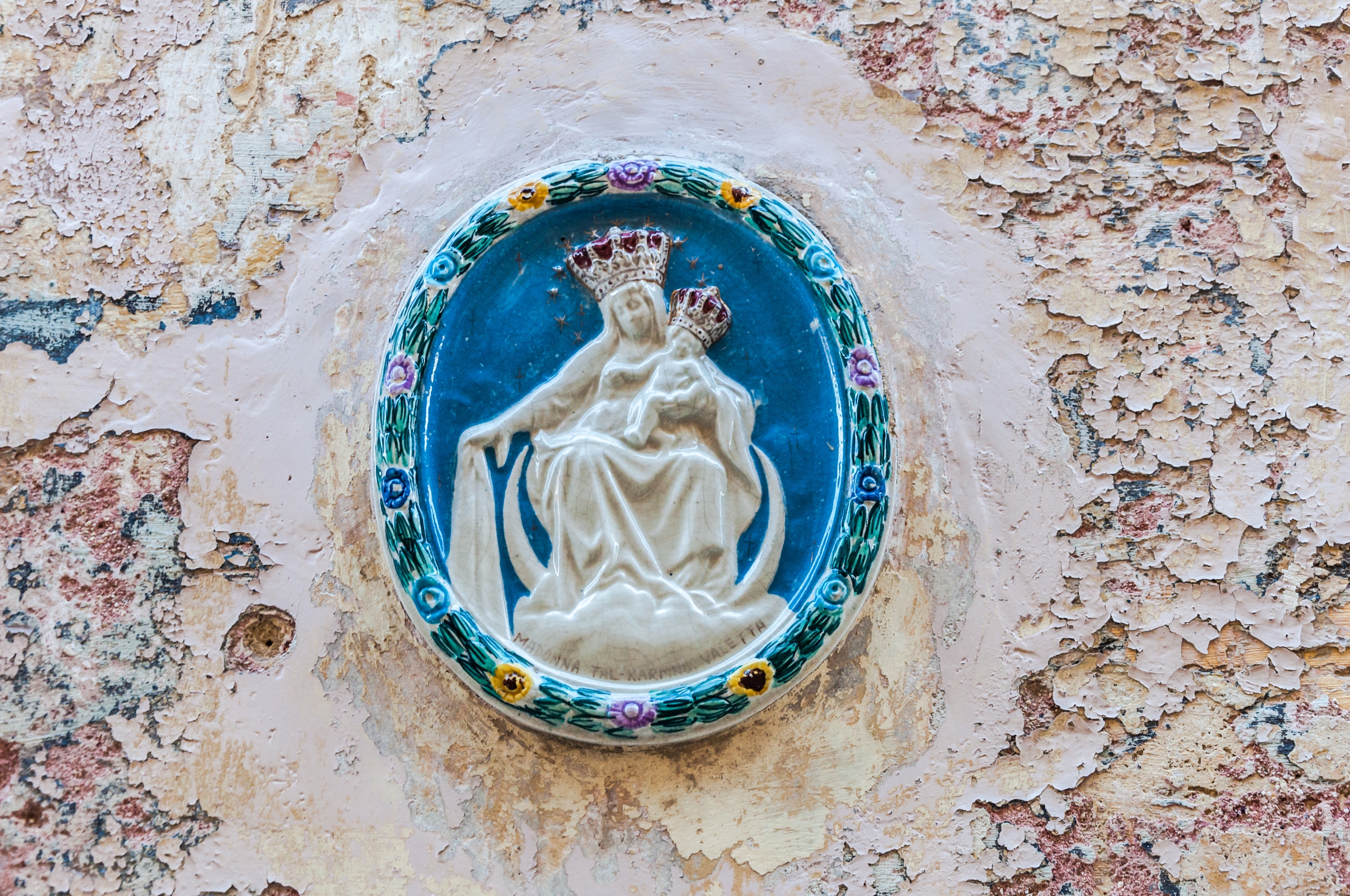Malta, a small but strategically significant island nation in the heart of the Mediterranean, has long been a crossroads of cultures and faiths. With Christian tradition stretching back nearly 2,000 years, the archipelago’s spiritual landscape reveals a deep and enduring devotion to the Virgin Mary. This is evident in the countless chapels and churches dotting its sunlit hills and rugged coastlines, many of which trace their origins to the earliest days of Christianity. Two notable Marian pilgrimage routes—the Camino Mariæ Melitensis AD 1432 and the Melita Mariana—offer different paths through this layered history, revealing the archipelago’s resilient spirit and profound faith.
The revolt of 1425 and the Camino Mariæ Melitensis AD 1432
The Camino Mariæ Melitensis AD 1432 is a path through Malta’s scenic landscapes, but also a route deeply rooted in the island’s struggle for autonomy. This 60-kilometer journey commemorates a pivotal episode in Maltese history: the revolt against the oppressive rule of the Aragonese nobleman Gustavo Monroy.
In the early 15th century, Malta was part of the Crown of Aragon, ruled indirectly through a series of feudal lords. Among these, Gustavo Monroy stands out for his harsh governance. Monroy, a powerful and ambitious figure, exploited his position, imposing heavy taxes and enforcing strict controls that burdened the Maltese. His rule sparked widespread resentment, culminating in the 1425 uprising that nearly severed Malta’s ties with the Aragonese crown.
Monroy sought refuge in the Castrum Maris (now Fort St. Angelo) in Birgu, a fortified stronghold dominating the Grand Harbour. This ancient fort, already a symbol of resilience from earlier conflicts, became the focal point of the Maltese resistance. Monroy’s wife and household, trapped within its walls, faced the full force of a determined local populace, united in their desire for freedom.

King Alfonso V’s dilemma
As the situation escalated, Monroy appealed to his liege, King Alfonso V of Aragon, for military support. The king, preoccupied with broader Mediterranean ambitions, initially hesitated to intervene directly. However, recognizing the strategic importance of Malta as a maritime stronghold, Alfonso eventually prepared to reassert his authority.
In a remarkable act of defiance, the Maltese raised an extraordinary 30,000 guilders to buy their freedom—a substantial sum, particularly for a small island community. This unprecedented financial effort forced Alfonso to reconsider his position. In 1428, he acknowledged the Maltese right to self-government, effectively enshrining their autonomy in perpetuity. To honor this remarkable act of resilience, Alfonso is said to have made a pilgrimage to the Sanctuary of Our Lady of Mellieħa in 1432, solidifying the link between Marian devotion and Maltese identity.
A work in progress
XirCammini, a Malta-based non-profit focused on cultural walking routes, is developing a 60-kilometer trail connecting Castrum Maris in Birgu to the sanctuary area of Mellieħa. Slated for completion and waymarking in 2024, the project seeks to retrace a historic route shaped by centuries of Marian devotion in the Maltese Islands. Along the path, the team will identify and document chapels, shrines, and other heritage sites associated with Marian traditions, creating a narrative that ties together landscape, memory, and local culture.
The initiative will culminate in a printed guidebook, a dedicated website, and a mobile app, offering users detailed historical context, route logistics, and site-specific insights. Designed for walkers, pilgrims, and cultural travelers alike, the Marian Camino aims to reconnect present-day visitors with a lesser-known layer of Malta’s historical terrain.
Key stops on the route will include:
Castrum Maris (Fort St. Angelo), Birgu
The route typically begins at this iconic fortress, a place where history and faith have intertwined for centuries. Originally a Roman castrum, it has witnessed countless sieges and stands as a testament to the archipelago’s enduring spirit.
Sanctuary of Our Lady of Mellieħa
One of the oldest Marian shrines in the Western Mediterranean, this sanctuary is said to have hosted St. Paul and St. Luke after their shipwreck in 60 CE. Its 12th-century fresco of the Virgin Mary remains a powerful symbol of faith, drawing pilgrims from around the world.
Mdina and Rabat
The ancient walled city of Mdina, once the island’s capital, is home to the Cathedral of St. Paul, built on the site where the apostle is said to have met Malta’s first Christian convert, the Roman governor Publius. Just outside Mdina’s walls, the catacombs of Rabat reveal the deep Christian roots of the island’s early communities.
The Broader Landscape of the Melita Mariana
For those seeking a more extensive exploration of Malta’s spiritual heritage, the Melita Mariana extends approximately 100 kilometers across both Malta and Gozo, the second-largest island in the archipelago. This route captures the diversity of Malta’s religious landscape, connecting sites of deep historical and spiritual significance.
Maltese devotion to the Virgin Mary runs deep, with roots stretching back to the Byzantine era, when early Christian communities likely venerated Mary within rock-cut chapels like those at Tas-Silġ in Marsaxlokk. This reverence blossomed further under the influence of the Eastern Orthodox tradition, which profoundly shaped the islands’ spiritual landscape. St. Luke’s presence in Malta, as recounted in local traditions, may have also contributed to this deep-rooted Marian culture, intertwining local devotion with early Christian narratives. The enduring impact of these early influences is visible today in the countless shrines, niches, and chapels dotting the islands, many of which were built to honor the Virgin, reflecting centuries of unwavering faith.
Today, this devotion remains palpable, with over 200 of Malta’s 359 churches dedicated to Mary, offering worshippers an extraordinary range of sacred spaces to reflect, pray, and celebrate. From the coastal chapels of Gozo to the bustling heart of Valletta, these sanctuaries stand as living testimonies to the island’s Marian heritage. Many of these churches are renowned for granting special graces, drawing pilgrims seeking comfort and guidance. The Melita Mariana route connects these sacred sites, guiding travelers through Malta’s layered spiritual history, from ancient grottoes to grand basilicas, and offering a profound connection to the spiritual heritage that has shaped the archipelago for centuries.
Some key stops on the route include:
The Grotto of Rabat
The cave site known today as the Grotto of Rabat holds a long-standing position in Malta’s devotional geography. Oral tradition places the beginning of its veneration around 1400, when a reported vision in the cave prompted public interest and pilgrimage. The Dominican Order later formalized the site’s significance, building a convent and enlarging the church in response to increasing pilgrimage activity. Over time, the site accrued a narrative of ‘graces granted,’ linked to episodes such as the healing of a paralytic in 1630 and deliverance from outbreaks in 1887 and 1999. A reported phenomenon in 2003 involving a sculpture of the Virgin—investigated by church authorities—further intensified attention. Today, the site remains a focus of local devotion and heritage conservation.
Church of Our Lady of Victory, Valletta
Built in 1567 following the end of the Great Siege of 1565, the Church of Our Lady of Victory in Valletta commemorates a pivotal moment in Maltese history. Constructed under the directive of Grand Master Jean Parisot de la Valette, the church was Malta’s first structure in the new fortified capital. The building reflects early modern artistic patronage, with 18th-century ceiling frescoes by Alessio Erardi depicting the life of the Virgin. A Byzantine icon of uncertain provenance, possibly gifted by Grand Master Wignacourt, reinforces the church’s symbolic function. Restored in recent years by Din L-Art Ħelwa National Trust, the church continues to serve as a site of historical reflection rather than solely devotional practice.
Madonna tal-Ħerba, Birkirkara
The shrine of Madonna tal-Ħerba in Birkirkara is a small-scale yet deeply frequented devotional site. Documented since at least the 16th century, the name tal-Ħerba—possibly referencing “ruin” or post-siege memory—adds a layer of linguistic ambiguity to its interpretation. The titular painting, dating from the late 17th century, portrays the Virgin and Child above souls in Purgatory. The site is distinguished by its extensive ex voto collection, with over 500 objects testifying to maritime perils, childbirth concerns, and personal healings. These votive expressions provide insight into the social anxieties and spiritual strategies of Maltese communities across centuries.
Stella Maris Parish, Sliema
The Stella Maris Church, now the principal parish of Sliema, traces its origins to a 17th-century coastal chapel dedicated to the Virgin as Star of the Sea (Stella Maris). Serving as a symbolic lighthouse for fishermen, the early structure was rebuilt and expanded in the 19th century as the town developed. Elevated to parish status in 1878, the church became a visual and spiritual landmark in an urbanizing region. Works by local artists, including Giuseppe Calì, and the 1891 statue of Our Lady from Paris, frame the site as both a religious space and an archive of aesthetic and social evolution.
Sanctuary of Our Lady of Miracles, Lija
Documented since the 13th century, the Sanctuary of Our Lady of Miracles in Lija occupies a central place in Malta’s northern devotional map. Reconstructed in 1664, the site houses a titular painting by Mattia Preti, commissioned by Grand Master Nicola Cotoner, and originally a Sicilian-style triptych attributed to Corso di Buono. An event in 1743—when moisture appeared on the Virgin’s face during an earthquake—was recorded as a miraculous sign and spurred renewed public attention. The church remains notable for its layered iconography and its extensive collection of ex votos.
The Cave Chapel at Castrum Maris, Vittoriosa
Within the fortifications of the ancient Castrum Maris in Birgu lies a semi-subterranean chapel believed to predate the medieval fortress itself. The site, originally a temple dedicated to Astarte and later Juno during the Phoenician and Roman periods, likely transformed into a Christian sanctuary following the 11th-century reconquest of Malta. The chapel, dedicated to the Nativity of the Virgin, reflects a wider Mediterranean pattern in which sanctuaries to female deities were adapted into Marian spaces in early Christian contexts. Though modest in scale, the chapel contributes to Malta’s complex layering of sacred landscapes across time.
National Marian Shrine of Ta’ Pinu, Gozo
Located in Gozo’s rural landscape, Ta’ Pinu has developed into Malta’s most prominent Marian sanctuary. Though its origins trace to a modest 15th-century chapel, the site gained national significance following an event in 1883, when Karmni Grima reported hearing a voice instructing her to pray. The episode catalyzed public interest, leading to the construction of the present Basilica, completed in 1931, which now houses the original chapel and its painting of the Assumption. Pilgrims frequently leave votive offerings, and the site has received formal recognition from several popes, including a 2022 visit by Pope Francis. Since 2015, the approach to Ta’ Pinu has been marked by a kilometer-long Pilgrim’s Way, featuring mosaic panels designed for reflection and quiet procession.
Walking the Archipelago
Walking the Maria Melitensis and Melita Mariana means passing through centuries of faith, resilience, and devotion. These routes invite pilgrims to trace the footsteps of saints, soldiers, and ordinary islanders who have drawn strength from their faith amid adversity. From the ancient stones of Castrum Maris to the windswept cliffs of Gozo, these caminos reveal the enduring power of the Maltese spirit and their unshakable connection to the Virgin Mary.
For those who walk these paths, the experience is a chance to connect with a living tradition, to reflect on the profound influence of faith in shaping a nation’s history, and to find moments of quiet grace amid the timeless landscapes of Malta.
This content has been brought to you in partnership with VisitMalta





